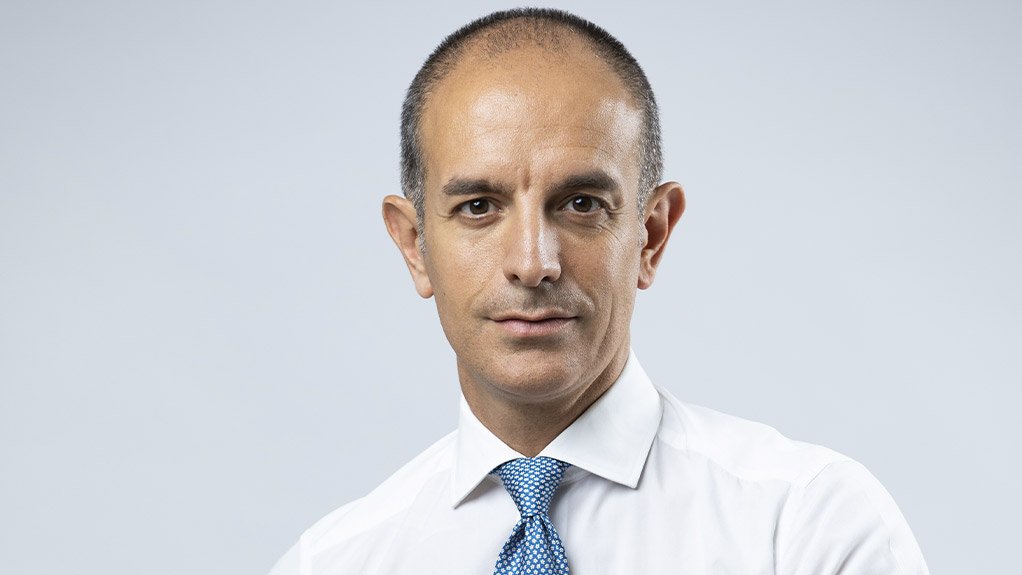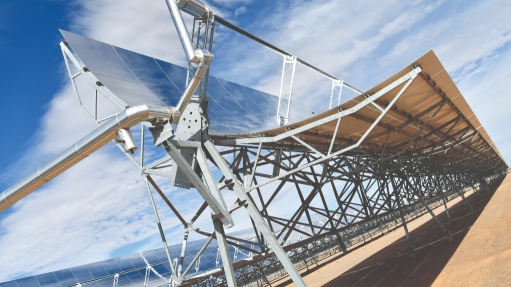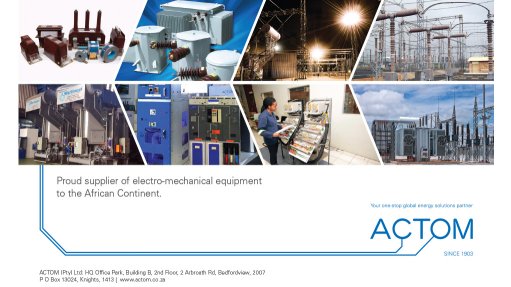Insights into South Africa's renewable energy future
This article has been supplied and will be available for a limited time only on this website.
The renewable energy industry, particularly in South Africa, is undergoing a rapid transformation, with both opportunities and challenges. This year, several key trends will shape the sector, demanding careful consideration from stakeholders. Two main trends – grid effectiveness and expansion, and dynamic pricing pressures – are further complicated by South Africa's unique market and policy changes. Insights from Manuele Battisti, Country Manager for Enel Green Power South Africa, offer valuable guidance for traversing this complex terrain.
Grid modernisation is the foundation for renewable integration
South Africa's existing grid infrastructure faces immense pressure from the increasing penetration of renewable energy sources, especially intermittent sources like wind and solar. There is an urgent need for substantial investment in grid modernisation. This includes not only expanding transmission capacity, but also enhancing grid resilience through digitisation and battery storage integration.
The existing bottlenecks, particularly in the Cape region, are significant obstacles to further renewable development. Smart grid technologies, enabling real-time data analysis and optimised energy distribution, are crucial for managing intermittency and maximising efficiency. Modernising the grid is not simply about adding capacity; it's about creating a flexible and intelligent system capable of handling the changing nature of renewable energy generation.
Pricing dynamics: Balancing stability and market forces
The renewable energy sector in South Africa grapples with complex pricing pressures. Manufacturers face rising production costs due to global supply chain challenges, increased customs duties, and inflation. These rising costs are impacting manufacturers and creating market uncertainty.
Electricity price volatility presents another challenge. Peak solar generation can drive prices to zero, impacting project profitability. This volatility can discourage investment and create instability in the market.
There is a growing need for battery storage, not only for storing energy, but also for providing ancillary grid services, which can stabilise revenue streams and enhance grid stability. Battery storage acts as a buffer against price fluctuations, allowing developers to support the stabilisation of the grid, balance volumes and prices, and ensure reliable returns for renewable energy projects.
South Africa's unique market context
South Africa's market possesses distinct characteristics. While the global component shortage has affected the wind sector, South Africa's market size and its recent regulatory evolution have allowed for better management of lead times compared to smaller markets. However, a significant bottleneck in wind project development continues due to a scarcity of suitable sites with sufficient wind resources and grid connection capacity.
Conversely, solar projects are progressing more rapidly, benefiting from shorter development timelines and fewer regulatory hurdles, even if solar irradiation might be slightly lower in some available locations. The relative ease of development and deployment makes solar an attractive option for meeting South Africa's growing energy needs.
Policy and market evolution
Policy changes are playing a crucial role in South Africa's energy transition. The regulatory shift allowing independent power producers (IPPs) to sell directly to end customers has spurred project opportunities. This is a key driver of renewable energy growth. It opens the market to greater competition and innovation.
Furthermore, the unbundling of the electricity sector and the potential development of an electricity stock exchange market are seen as crucial steps towards a more competitive and investor-friendly market. These changes promise to enhance market efficiency, attract further investment, and ultimately lower costs for consumers.
A strategic approach
Enel's strategy in South Africa is a partnership-focused approach to generation, working with partners like the Qatar Investment Authority (QIA). Enel is committed to operational efficiency and resilience in navigating market intermittency and external factors. It is focused on adapting to the dynamic market, including the ability to scale operations quickly or adjust as needed due to factors like grid constraints or regulatory changes.
Looking ahead, Enel Green Power anticipates the completion of its Impofu Wind Farm cluster, a major project in South Africa, significantly increasing its generation to more than 5 TWh in the county. There are additional projects in the pipeline and ongoing exploration of further opportunities. This expansion in generation capacity represents a substantial contribution to South Africa's energy needs and its transition to a cleaner energy future.
Embracing innovation and resilience for a sustainable future
South Africa's renewable energy future hinges on effectively managing the complexities of the grid, as well as pricing dynamics, policy evolution, and market-specific challenges. Innovation and infrastructure investment are paramount. Resilience and adaptability are also crucial for success in this dynamic environment.
Finally, the ability to anticipate and respond to changing market conditions, and technological advancements, will be essential. By embracing these principles, South Africa can solidify its position in the global energy transition, ensuring a sustainable and reliable energy future for all of its citizens. The journey towards a clean energy future is complex, but with strategic planning, investment, and a commitment to innovation, South Africa can achieve its renewable energy goals.
Comments
Press Office
Announcements
What's On
Subscribe to improve your user experience...
Option 1 (equivalent of R125 a month):
Receive a weekly copy of Creamer Media's Engineering News & Mining Weekly magazine
(print copy for those in South Africa and e-magazine for those outside of South Africa)
Receive daily email newsletters
Access to full search results
Access archive of magazine back copies
Access to Projects in Progress
Access to ONE Research Report of your choice in PDF format
Option 2 (equivalent of R375 a month):
All benefits from Option 1
PLUS
Access to Creamer Media's Research Channel Africa for ALL Research Reports, in PDF format, on various industrial and mining sectors
including Electricity; Water; Energy Transition; Hydrogen; Roads, Rail and Ports; Coal; Gold; Platinum; Battery Metals; etc.
Already a subscriber?
Forgotten your password?
Receive weekly copy of Creamer Media's Engineering News & Mining Weekly magazine (print copy for those in South Africa and e-magazine for those outside of South Africa)
➕
Recieve daily email newsletters
➕
Access to full search results
➕
Access archive of magazine back copies
➕
Access to Projects in Progress
➕
Access to ONE Research Report of your choice in PDF format
RESEARCH CHANNEL AFRICA
R4500 (equivalent of R375 a month)
SUBSCRIBEAll benefits from Option 1
➕
Access to Creamer Media's Research Channel Africa for ALL Research Reports on various industrial and mining sectors, in PDF format, including on:
Electricity
➕
Water
➕
Energy Transition
➕
Hydrogen
➕
Roads, Rail and Ports
➕
Coal
➕
Gold
➕
Platinum
➕
Battery Metals
➕
etc.
Receive all benefits from Option 1 or Option 2 delivered to numerous people at your company
➕
Multiple User names and Passwords for simultaneous log-ins
➕
Intranet integration access to all in your organisation




















